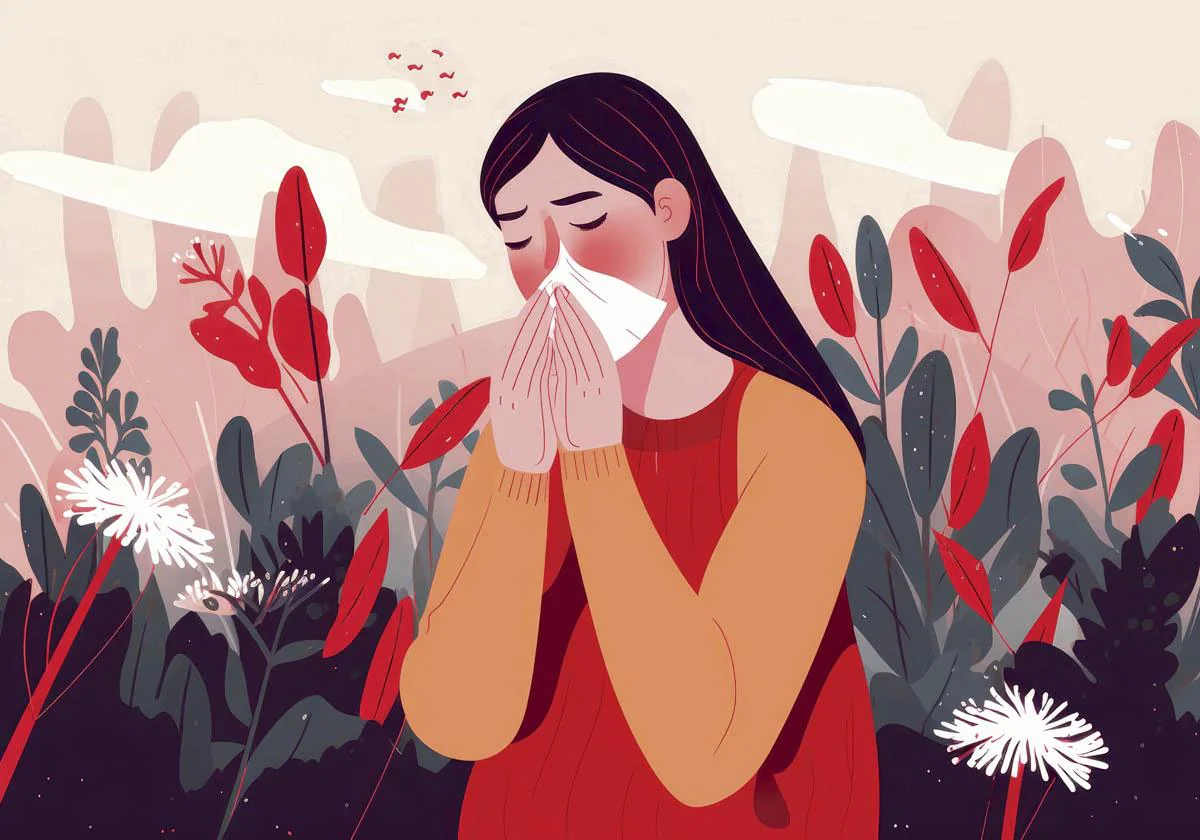The sudden changes in temperature in the past few days, the return to work after the holidays, and the resumption of school are all excellent breeding grounds for the spread of bad viruses. Among them, we must also add the typical diseases at this time of year, such as: many. Outpatient clinic waiting rooms are starting to fill up with adults and children suffering from colds, flu, asthma, COVID-19 and a lot of ‘inflammation’. Rhinitis, sinusitis, bronchiolitis, arthritis, dermatitis…” Dr. Juan Carlos Montalvá, coordinator of the emergency task force of the Spanish Association of Primary Care (Semergen), lists these diseases. These are the most common illnesses in autumn.
Colds, flu and COVID-19
Although the peak of such illnesses usually occurs later in winter, this year GPs have seen many patients with more or less cold, flu and Covid-19 in a matter of weeks. “The current strain of coronavirus is highly contagious, but quite poor in terms of severity. There are also cases of influenza that present with symptoms of pharyngitis, tonsillitis, fever, and in some cases, symptoms that last longer than usual. A long cough… the vaccination campaign will start soon and it is likely that these possible complications that we are now treating will tend to disappear or become weaker,” Dr. Montalva explained.
“First of all it must be clear that both colds and flu are diseases caused by viruses, so self-treatment with antibiotics at home is of no use,” warns Carlos Fernandez Moriano, head of the health sector. Science communication by the General Council of Pharmacists. In both cases, the symptoms are treated.
“Most respiratory infections we suffer at this time of year are mild and temporary. If we have a mild headache, runny nose, mild fever and malaise, taking ibuprofen or paracetamol may be enough. However, if the patient is in a high-risk group (infants, people over 65, pregnant women, immunocompromised people, cancer patients…), or symptoms that get worse over time (high fever, difficulty breathing, headache, very severe), strong head and muscle tension ), it is recommended to make an appointment with your GP. The duration of cold symptoms is usually a week, but a cough can last up to fifteen days, while the flu takes longer to go away, around ten days,” experts agree .
Asthma and allergic rhinitis
Asthma attacks are also frequent at this time of year and the chronic disease already affects 5% of the adult population and at least one in 10 Spanish children, according to data managed by the Spanish Society of Allergology and Clinical Immunology. ). “While respiratory illnesses can occur at any time of the year, people with grass allergies typically experience more episodes of bronchospasm in the spring. However, the worst time of year for people with dust mite allergies is It’s September to November, because the allergen proteins are more active,” said Dr. Montserrat Álvaro, a pediatric allergist at Barcelona’s San Juan Hospital.
Allergic rhinitis is increasingly common, usually peaking in the fall. In this case, symptoms vary depending on the allergen causing the reaction, although most patients with this type of rhinitis experience symptoms such as itching, sneezing, and a runny nose. Becoming more liquid and clear.
Atopic dermatitis and acne
As with asthma, the most critical times of year for atopic dermatitis outbreaks are spring and fall. “Those reactions to environmental allergies (pollen, mites…) are usually very short-lived, can often be cured with antihistamines, and are common in September and October,” says Dr. Montalva.
Acne is another condition that usually worsens in the fall. «One of the ways the skin defends itself against sun damage in summer is by increasing its thickness to prevent the sun’s rays from reaching the deepest layers. What happens is that this thickening creates a rebound effect that usually translates into acne breakouts at this time of year,” points out Dr. Eduardo Nagore, head of the dermatology service at the Valencian Institute of Oncology (IVO).
Arthritis and Osteoarthritis
The changes in air pressure typical of this time are also detrimental to the joints and ligaments of people with rheumatic conditions such as arthritis or osteoarthritis. As for treatments, the first case is endless: from anti-inflammatory drugs to biologics, immunomodulators… While in the second case, drugs are usually prescribed to eliminate pain, as well as local treatments such as injections. Hyaluronic acid or corticosteroids are recommended, and sometimes rehabilitation is recommended.

